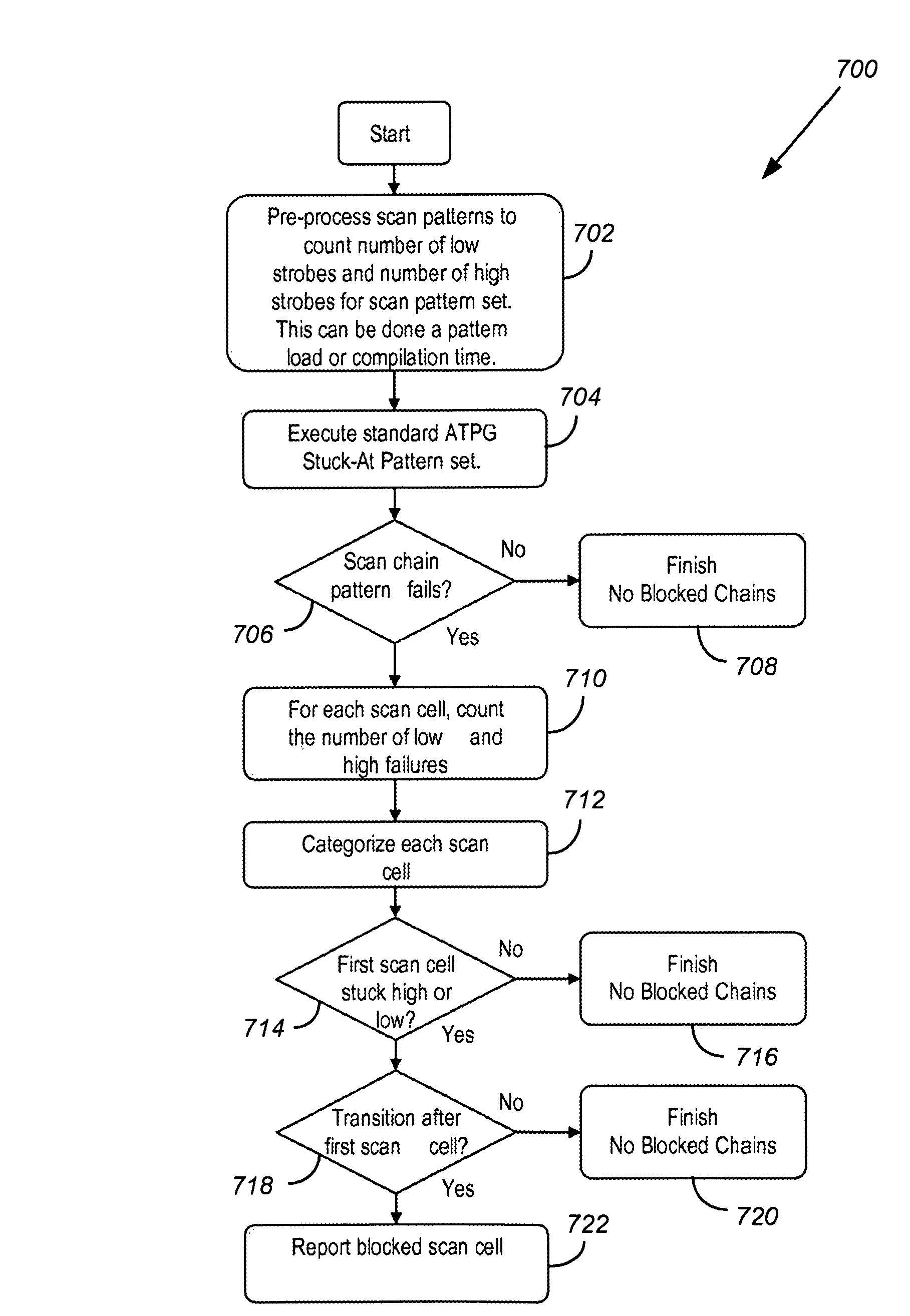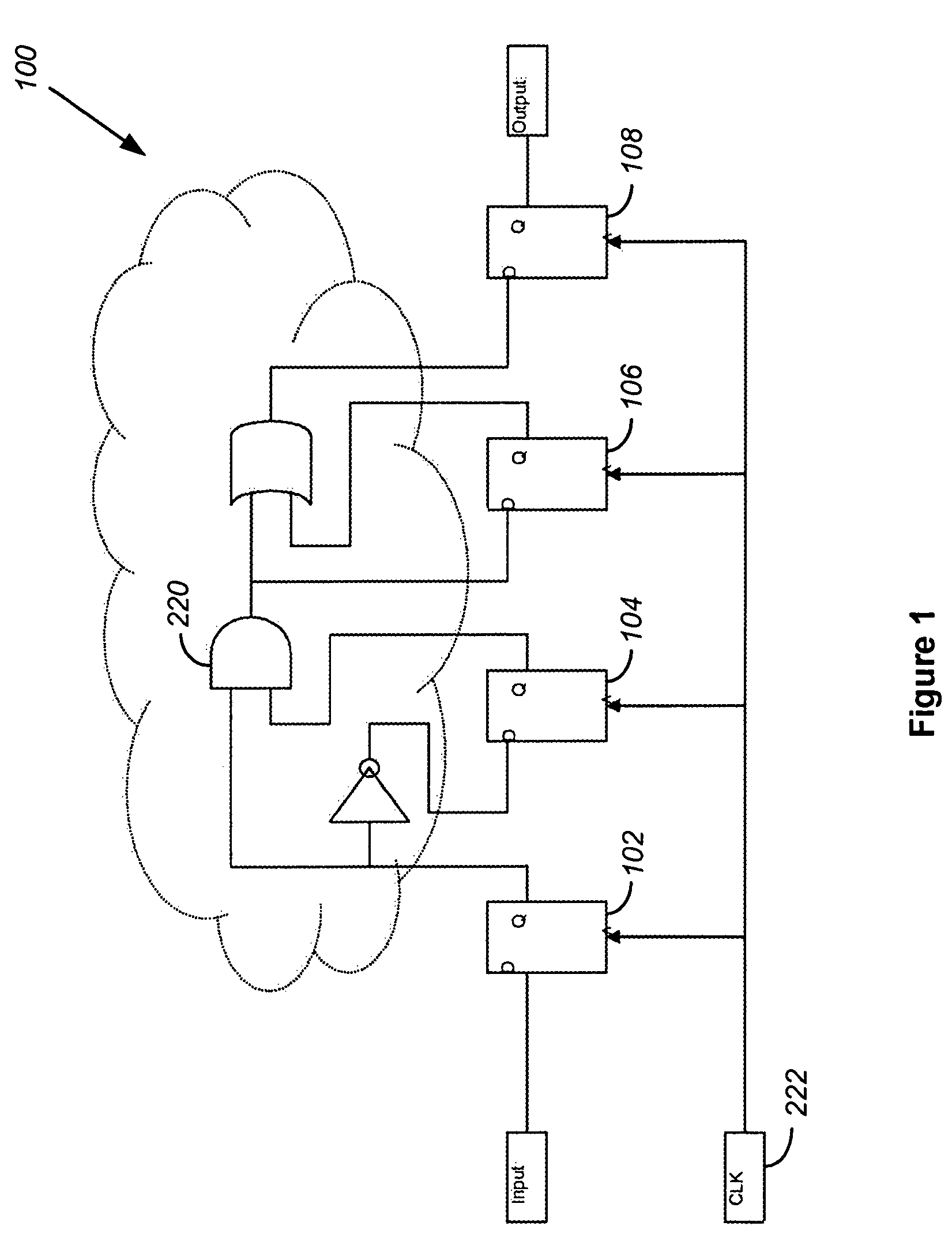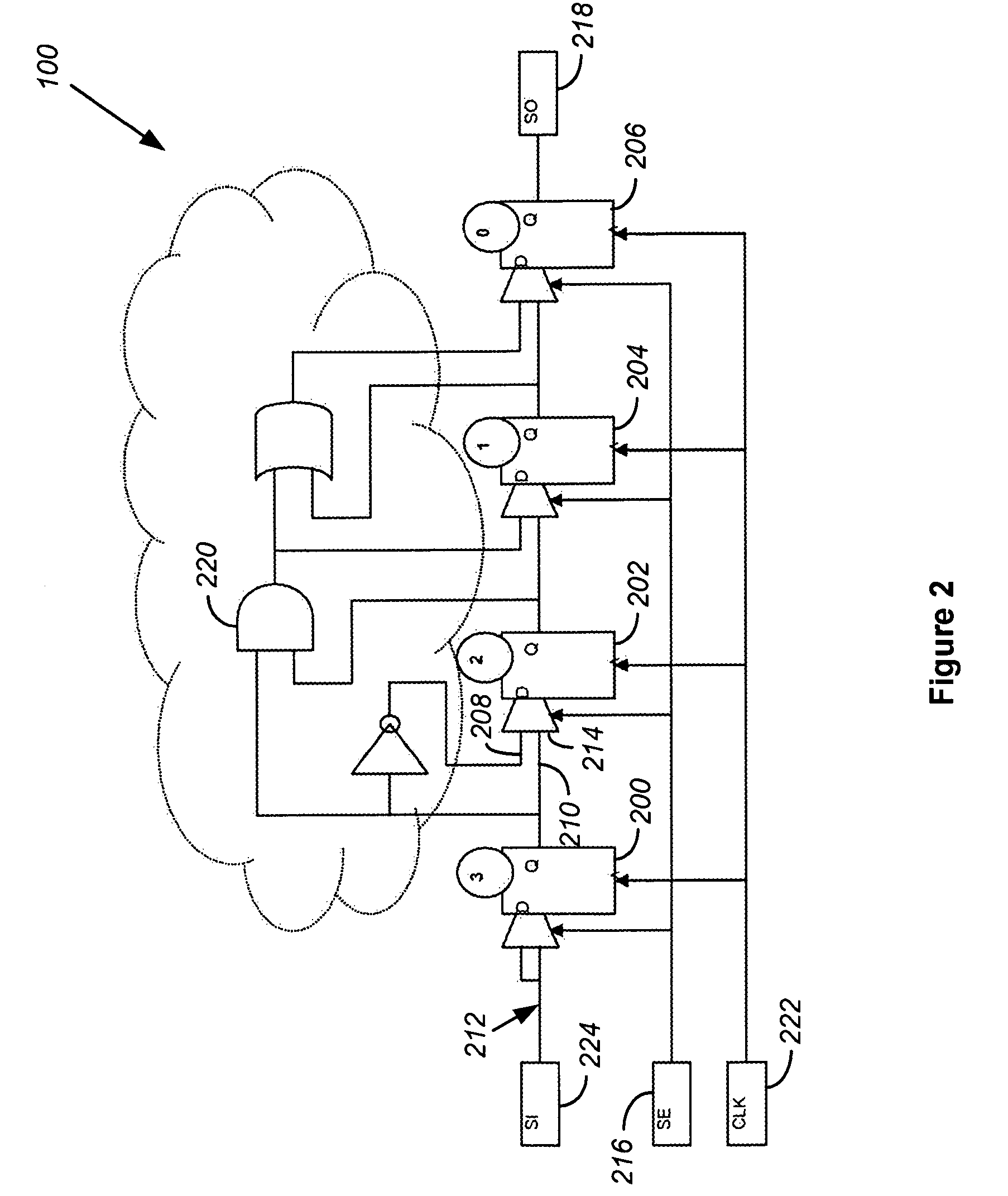Process for identifying the location of a break in a scan chain in real time
a scan chain and break technology, applied in the field of real-time process for identifying the location of a break in a scan chain, can solve the problems of accumulating the number of high failures and low failures for each scan cell
- Summary
- Abstract
- Description
- Claims
- Application Information
AI Technical Summary
Benefits of technology
Problems solved by technology
Method used
Image
Examples
Embodiment Construction
[0040]FIG. 4 shows a timing diagram for a test pattern set with four scan patterns, three scan chains, and four scan cells per each chain to illustrate the multiple dimensions. In this example, 48 total strobes are shown for 12 scan cells. For each scan chain, there is a scan output signal. Each scan cell must be stitched into a scan chain.
[0041]Applications today may include millions of scan cells. These scan cells are distributed amongst a number of scan chains that may range from a handful to hundreds. Thus, scan chains may contain hundreds of scan cells to tens of thousands. For example, if a device contains 1 million scan cells and 100 scan chains, each scan chain would contain about 10,000 scan cells. The exact number of scan cells in each scan chain is determined by the chip designer. However, the designer usually strives to have balanced scan chains for optimum test time performance.
[0042]Regardless of the organization of scan chains, each scan cell is typically strobed per ...
PUM
 Login to View More
Login to View More Abstract
Description
Claims
Application Information
 Login to View More
Login to View More - R&D
- Intellectual Property
- Life Sciences
- Materials
- Tech Scout
- Unparalleled Data Quality
- Higher Quality Content
- 60% Fewer Hallucinations
Browse by: Latest US Patents, China's latest patents, Technical Efficacy Thesaurus, Application Domain, Technology Topic, Popular Technical Reports.
© 2025 PatSnap. All rights reserved.Legal|Privacy policy|Modern Slavery Act Transparency Statement|Sitemap|About US| Contact US: help@patsnap.com



